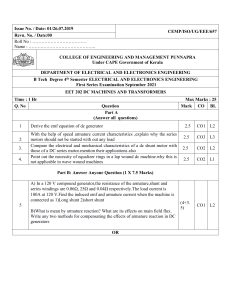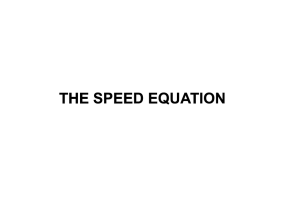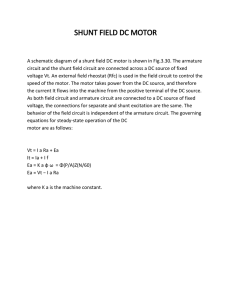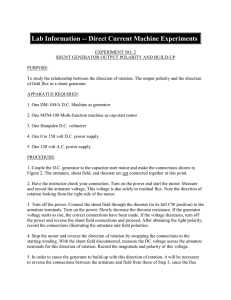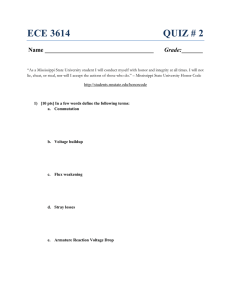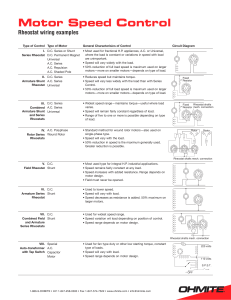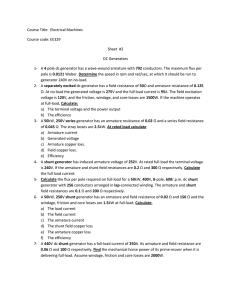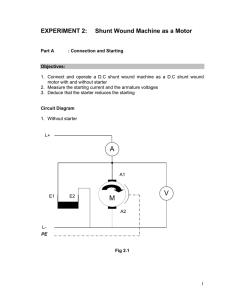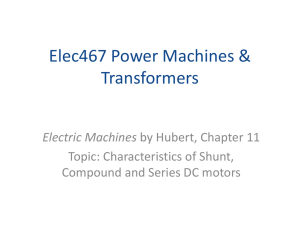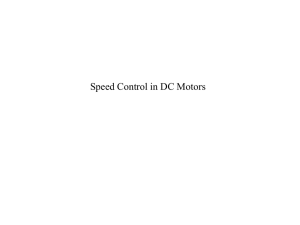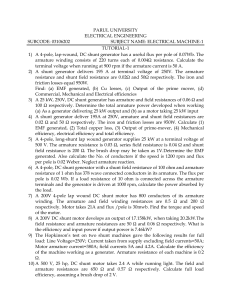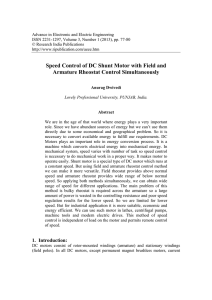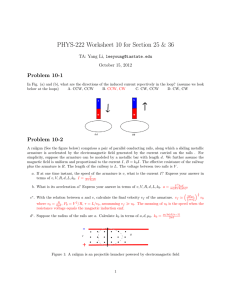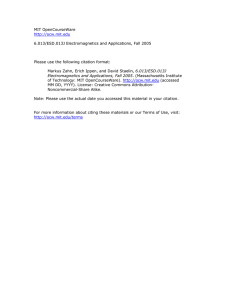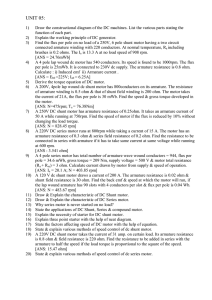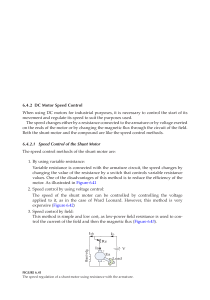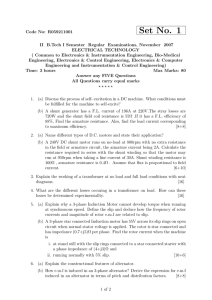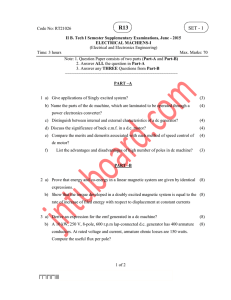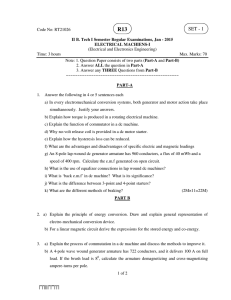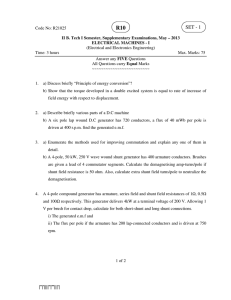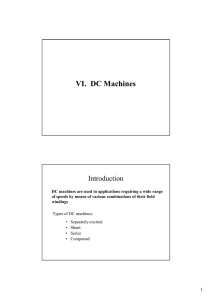Basic DC Generator Separately Excited Shunt Generator
advertisement
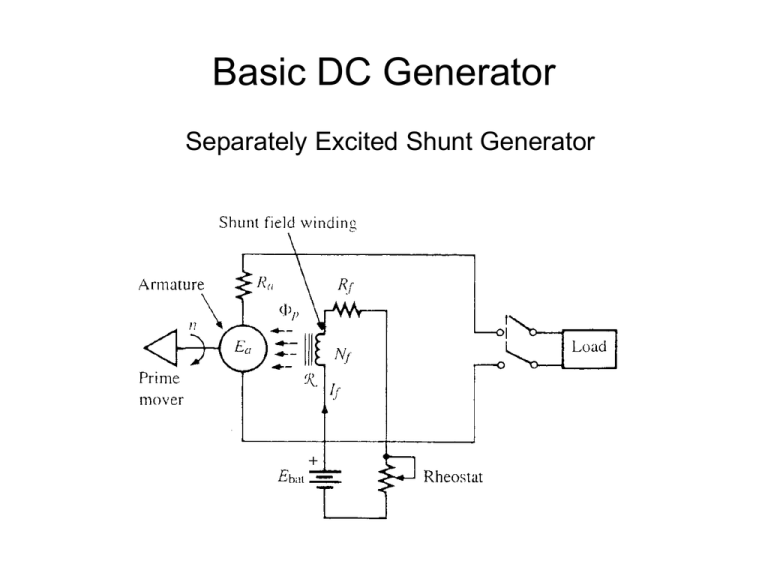
Basic DC Generator Separately Excited Shunt Generator NI R f f p nN I k E n k R E I R R f a p G bat f f rheo If the Rheostat resistance is reduced, If increases, Φp increases, Ea increases, as shown in the “Magnetization” Curve f G Operating Point Ebat = If(Rf +Rrheo) looks like y=mx + b Superimpose on the Magnetization curve Operating Point (continued) Intersection with the Magnetization curve yields the operating point Generator-to-Motor Transition • Permanent-magnet field • One-turn armature • Drive so that Ea>Ebat • Current Ia flows to charge Ebat From a Circuit Point-of-View • “Generate” voltage Ea • When supplying current, the machine develops a “countertorque” in opposition to the driving torque Motor-to-Generator Transition • “Uncouple” the Prime Mover • Eventually, Ea will decrease so that Ea<Ebat • Ia flows as shown • Armature turns in the same direction From a Circuit Point-Of-View • Counter-emf, Ea, is induced, opposing the driving voltage Ebat • Machine develops a driving torque Reversing Direction Method 1 Reverse the Armature Current Reversing Direction – Method 2 Reverse the Direction of the Field Basic DC Motor – Shunt Motor Characteristics of a Shunt Motor • Shunt field provides the pole flux • Power in the field is independent of the LOADing • Generate counter-emf in the armature E n k a p V I R E T E n 0 k a p p G a a G V E I R T a a a a
